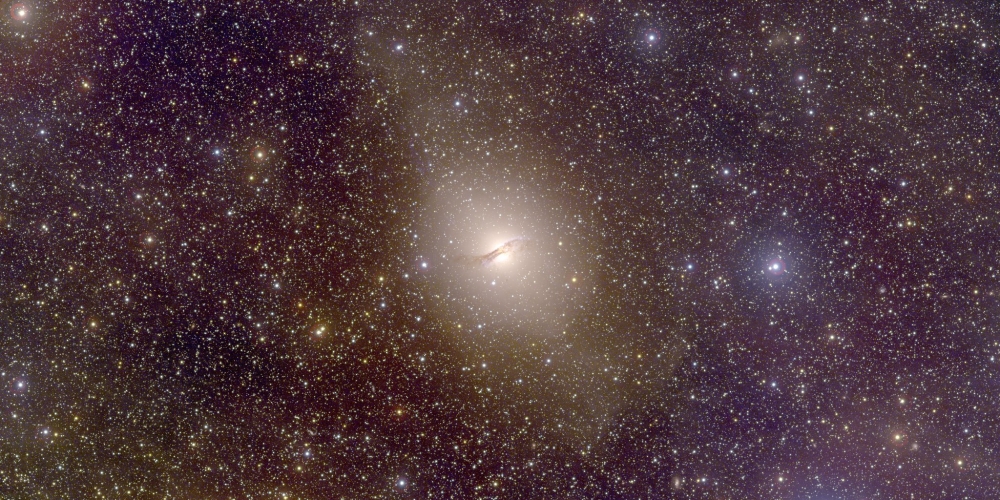Distant galaxy group contradicts common cosmological models, simulations

Centaurus A, an elliptical galaxy 13 million light-years from Earth, hosts a group of dwarf satellite galaxies co-rotating in a narrow disk, a distribution not predicted by dark-matter-influenced cosmological models. Credit: Christian Wolf and the SkyMapper team / Australian National University
February 1, 2018, University of California, Irvine
An international team of astronomers has determined that Centaurus A, a massive elliptical galaxy 13 million light-years from Earth, is accompanied by a number of dwarf satellite galaxies orbiting the main body in a narrow disk. In a paper published today in Science, the researchers note that this is the first time such a galactic arrangement has been observed outside the Local Group, home to the Milky Way.
"The significance of this finding is that it calls into question the validity of certain cosmological models and simulations as explanations for the distribution of host and satellite galaxies in the universe," said co-author Marcel Pawlowski, a Hubble Fellow in the Department of Physics & Astronomy at the University of California, Irvine.
He said that under the lambda cold dark matter model, smaller systems of stars should be more or less randomly scattered around their anchoring galaxies and should move in all directions. Yet Centaurus A is the third documented example, behind the Milky Way and Andromeda, of a "vast polar structure" in which satellite dwarves co-rotate around a central galactic mass in what Pawlowski calls "preferentially oriented alignment."
See full text